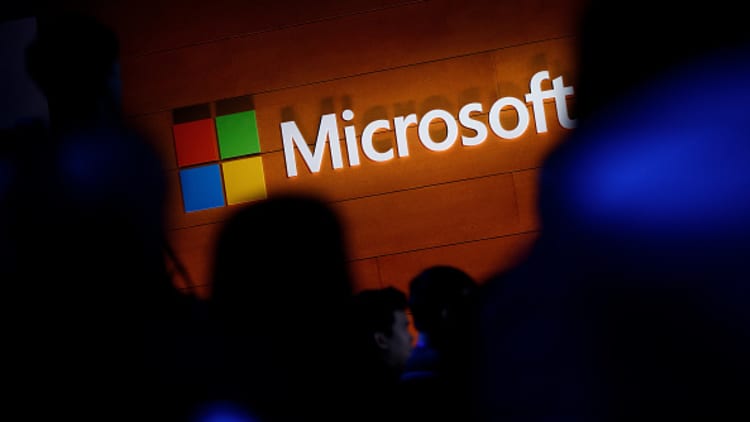Microsoft's logo is a window. The company's identity is partly built around Windows, because hundreds of millions of people use it.
But in announcing Microsoft's latest reorganization Thursday, CEO Satya Nadella is shaping the company around the areas that are growing the most, and Windows will be part of them, rather than the focus.
"The platform is not Windows. The platform is now cloud," Gartner analyst Ed Anderson told CNBC in an interview.
With the changes, Microsoft will be doubling down with products like its Azure public cloud, where developers can use Windows, as well as something called Microsoft 365. That's a new bundle containing Windows and the growing Office 365 cloud productivity business, but also other services that Microsoft can use to grow revenue, as more companies make the shift to Office 365 from traditional Office licenses.

More specifically, as Windows and first-party devices have lagged in terms of revenue growth, Microsoft's Windows and Devices Group is being divvied up as its chief, Terry Myerson, leaves.
That means more resources are coming under Rajesh Jha, who has led Office in recent years, and Scott Guthrie, the person who has overseen the rise of Azure, as Nadella explained in his all-company memo on Thursday. Meanwhile, the artificial intelligence effort under Harry Shum will largely stay put.
A bigger cloud push
So far, the response has been generally positive among current employees.
"This is probably one of the most, if not the most, significant reorgs in the company's history with a new EVP [executive vice president] owning multi-billion dollar businesses and breaking up the largest legacy businesses," said an employee who's getting moved into one of the two expanding engineering groups.
"If there's one thing about Satya, he's not afraid of making fundamental, disruptive changes to support his vision."
Nadella has been talking about the emergence of a "cloud-first" world since he replaced Steve Ballmer as the head of Microsoft in 2014. This reorganization makes Microsoft even more focused on cloud services across the board.
In particular, now there's an executive vice president -- a top Microsoft leadership position -- just for Azure. That person, Jason Zander, will be reporting to Guthrie, who will be executive vice president for the expanded Cloud and AI Platform group, a Microsoft spokesperson told CNBC in an email.
Azure is second to only Amazon Web Services in the public cloud market. While Amazon had 34 percent of the cloud infrastructure services market in the fourth quarter, Azure had 13 percent, more than Google and IBM, according to Synergy Research Group.
One person in the Azure organization said they approved of the changes.
At the same time, one of Microsoft's most seasoned leaders is stepping away.
"I liked Terry a lot," said an employee who worked in Myerson's organization. "He was abrasive and headstrong, which rubbed people the wrong way. But I enjoyed working with him and definitely disappointed that he's leaving."
Microsoft announced a similarly sweeping sales reorganization last year, bringing in more technical salespeople and focusing more on getting customers to use cloud services. Today many people inside Microsoft feel those changes were smart.
But ultimately, both reorganizations bolstering Microsoft's cloud push. It's not a major change in direction, at least as Garnter analyst Anderson -- himself a former Microsoft employee -- sees it. Windows can now become a bigger part of the cloud narrative for Microsoft, and it will become more integrated with software in offerings like Microsoft 365.
"I don't think Steve Ballmer could have maybe made this change with the same credibility," Anderson said. "I think this has been Satya's role to play, and he's done it well."
--Todd Haselton contributed to this story.
WATCH: Bulls target Microsoft



